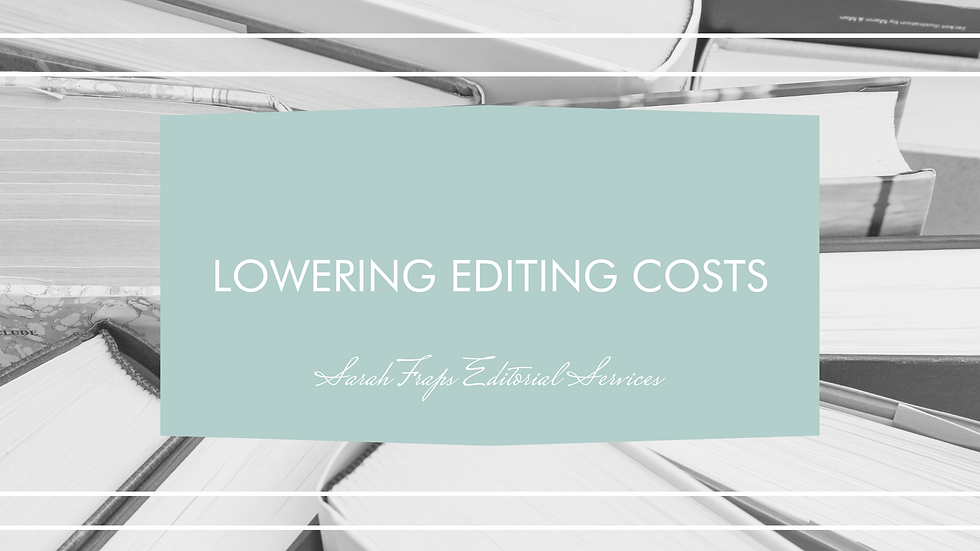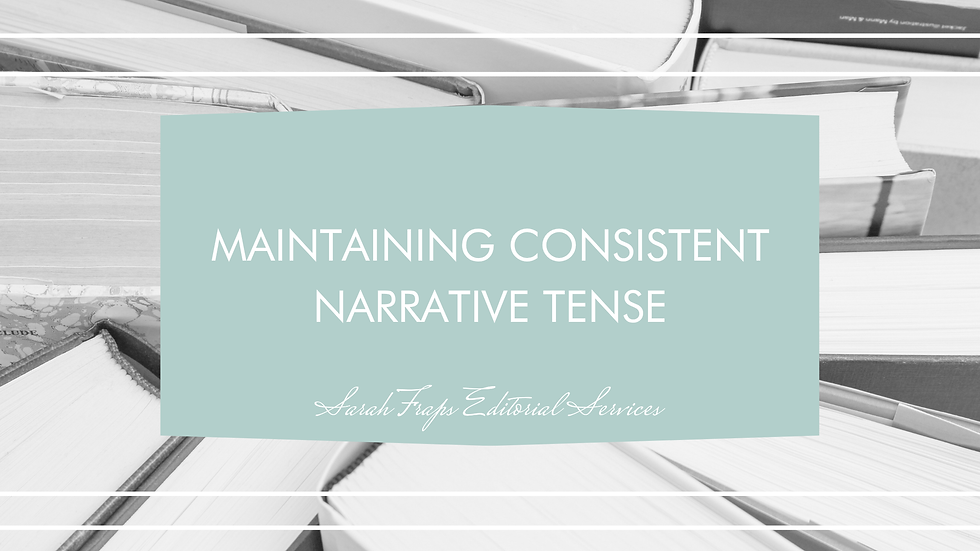Lowering editing costs
- Sarah Fraps

- Nov 10, 2022
- 3 min read
Updated: Nov 7, 2025
In the editing world, time really is money. Editors have to strike a balance between setting a rate they can live on and completing work in a timely, methodical, and conscientious way, while keeping a good flow and not letting projects stagnate. So, the longer a manuscript takes to edit (no matter how long it is), the higher the cost for authors.

Some editors may offer a flat or fixed rate, but many will adjust their per word, hourly, or project rates based on how long they project an editing job will take so that they can be assured their time will be compensated correctly.
Use the revision stage well
The best advice I’ve seen for authors is to use the self-editing, or revision, stage well. Authors should put a self-editing plan together so they can reach their own goals, but also, so they can present the best version of their manuscript to a professional editor.
This goes for authors who are seeking to traditionally publish. While an author wanting to traditionally publish won’t need to hire a professional editor, they should still do their best to “trim the fat” off their manuscript and tighten it up as much as they can before querying.
Put together a plan
Putting together a self-editing plan can be simple, but it should have several layers to it. Start with a resource that will guide you through self-editing and creating several drafts of your manuscript.
I highly recommend Louise Harnby’s Fiction Editing at Sentence Level. Louise doesn’t pay me to talk about her site, books, or courses, but if you’re a freelance editor, it’s impossible not to. She has been around in the editing biz for a long, long time, and her website is a treasure trove of resources for writers and editors.
Her book is part of a course, but it can also be read as a standalone novel available as an ebook and as a paperback through Amazon. The book takes you through a variety of topics, including: tense, point of view, passive versus active voice, writing action scenes, dialogue and thought tag formatting, use of punctuation, showing versus telling, free indirect speech, and so much more.
While Louise herself is from the UK, and she prefers UK style and spelling conventions, all of her examples within the book are shown using American spelling and style conventions as well. This is a must-have resource for every author.
More layers
Besides having a resource to take you through revision, this is certainly the stage to share your manuscript or parts of your manuscript with a critique group or beta readers. Incorporate their feedback into your revising or make note of anything you’d like to incorporate but are unsure of how to do so at this stage.
(As a note, I am not “officially” offering beta reading services yet, but this a service I provide and will begin advertising soon!)
Once you feel like you can do absolutely nothing more to make your manuscript better, it’s time to search for an editor. Perhaps you still have some big picture concerns to deal with, and you’ll need the help of a developmental editor. But if beta reader feedback hasn’t identified anything huge, a line editor or a line- and copyeditor will likely be your next step.
So, how do you save money then?
If you’ve trimmed your manuscript (less words overall), and created as much consistency and flow as you can within your narrative, then you’ll have created a generally smooth path for your editor to navigate as they work their way through your novel.
All those hours they don’t spend looking over your manuscript are hours you don’t have to pay for. A good revision stage can easily shave off not just hours, but days of editing work, and that, my friend, means more money in your pocket.








Comments